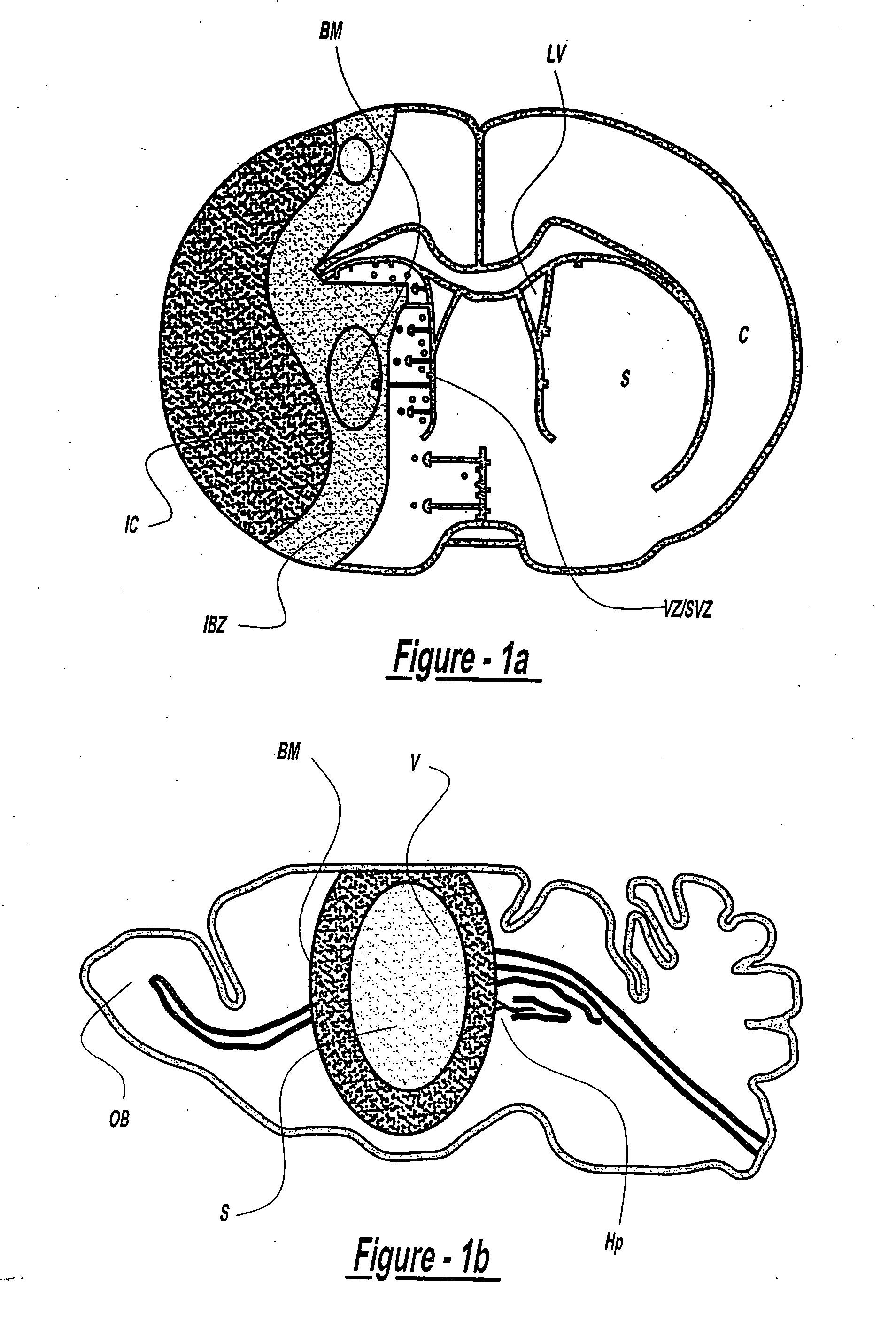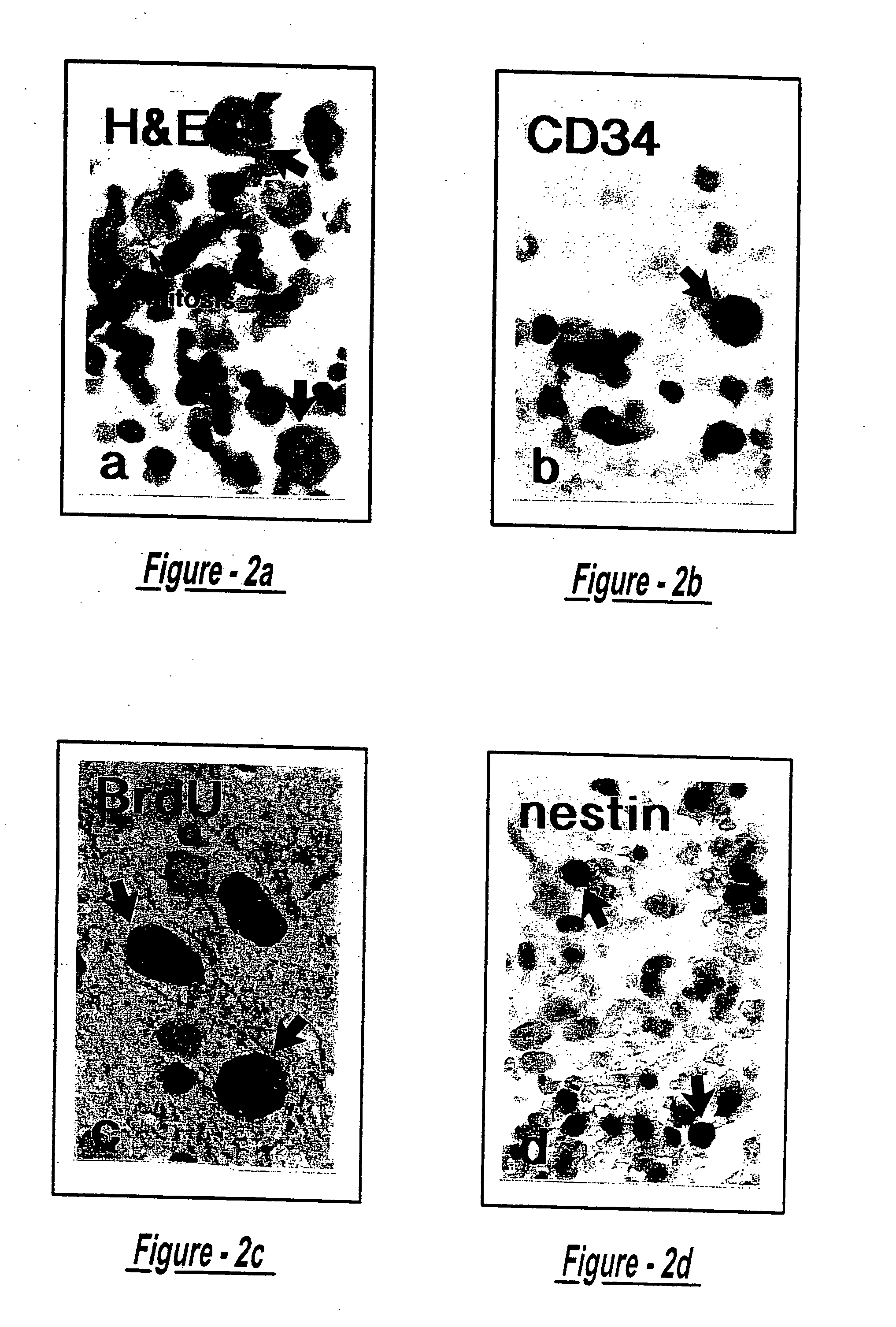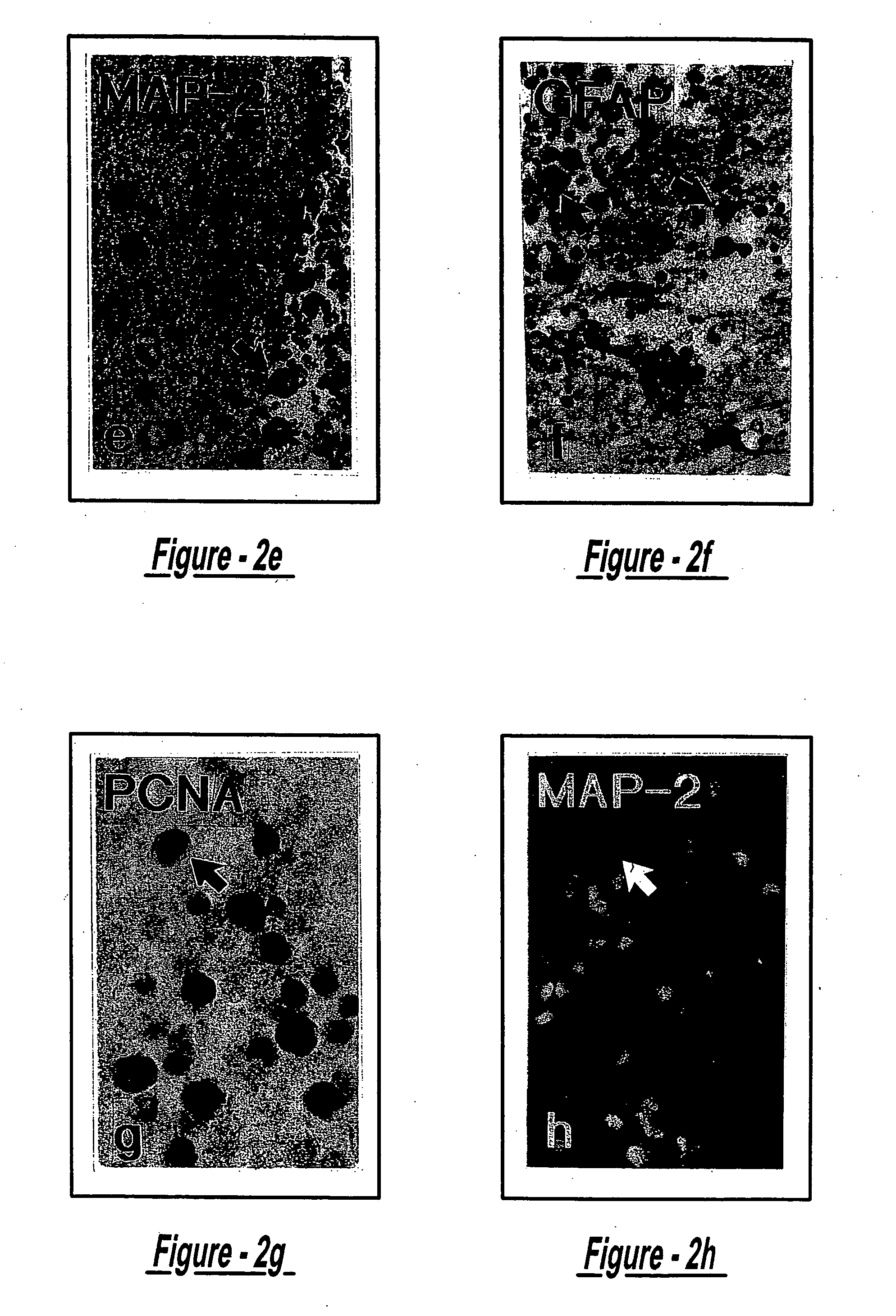Bone marrow transplantation for treatment of stroke
- Summary
- Abstract
- Description
- Claims
- Application Information
AI Technical Summary
Benefits of technology
Problems solved by technology
Method used
Image
Examples
example 1
Treatment of Stroke (Rat) with Intracerbral Transplantation of MSC
Description of Intracerebral Transplantation of Bone Marrow Derived MSCs After Cerebral Ischemia in the Rat
[0131] Adult male Wistar rats were used in this study (n=28). Rats were subjected to middle cerebral artery occlusion (MCAo) for two hours using the intraluminal occlusion model. Following MCAo, the control group (rats subjected to MCAo without receiving transplantation of MSCs (n=8)), was compared with the experimental groups, which included injection into the ischemic boundary zone (IBZ) at 24 hours after MCAo: phosphate buffered saline (n=4); non NGF cultured bone marrow MSCs (n=8); and NGF cultured MSCs (n=8). Approximately 4×104 cells in 10 μl total fluid volume were injected into the rat following MCAo. The rats were sacrificed 14 days after MCAo.
Behavioral Outcome Measurements
[0132] Behavioral data from the battery of functional tests (rotorod, adhesive-removal and Neurological Severity Score tests (...
example 2
Treatment of Stroke (Mouse) with Intracerebral Transplantation of MSC
Intrastriatal Transplantation of MSCs into Mice After Stroke: Embolic MCAo and Transplantation
[0133] Experimental adult mice (C57BL / 6, weighing about 27-35 g) were subjected to MCAo and following MCAo, the mice received transplantation of MSCs (n=5). Control mice were subjected to MCAo alone (n=8). Experimental groups received either injection of PBS into the ischemic striatum (n=5); or transplantation of MSCs into the normal striatum (n=5). MCAo was induced using an embolic model developed in our laboratory. (Zhang et al., 1997). Briefly, using a facemask, mice were anesthetized with 3.5% halothane and anesthesia was maintained with 1.0% halothane in 70% N2O and 30% O2. A single intact fibrin-rich in 24 hour old homologous clot (8 mm×0.000625 mm2, 0.18:1) was placed at the origin of the MCAo via a modified PE-50 catheter. Surgical and physiological monitoring procedures were identical to those previously publis...
example 3
Treatment of Stroke (Mouse) with Intravacular Administration of MSC
Description of Experiments
[0136] Experiments were performed on adult male Wistar rats (n=30) weighing about 270 to 290 g. In all surgical procedures, anesthesia was induced in rats with 3.5% halothane, and maintained with 1.0% halothane in 70% N2O and 30% O2 using a face mask. The rectal temperature was controlled at 37C° with a feedback regulated water heating system. Transient MCAo was induced using a method of intraluminal vascular occlusion, as described above. Two hours after MCAo, reperfusion was performed by withdrawal of the suture until the tip cleared the internal carotid artery.
(Intracarotid Administration of MSCs)
[0137] Intra-carotid transplantation of MSCs was carried out at 24 hours after MCAo (n=23). A modified PE-50 catheter was advanced from the same site of this external carotid artery into the lumen of the internal carotid artery until it rested 2 mm proximal to the origin of the MCA (FIG. 1)...
PUM
 Login to View More
Login to View More Abstract
Description
Claims
Application Information
 Login to View More
Login to View More - R&D
- Intellectual Property
- Life Sciences
- Materials
- Tech Scout
- Unparalleled Data Quality
- Higher Quality Content
- 60% Fewer Hallucinations
Browse by: Latest US Patents, China's latest patents, Technical Efficacy Thesaurus, Application Domain, Technology Topic, Popular Technical Reports.
© 2025 PatSnap. All rights reserved.Legal|Privacy policy|Modern Slavery Act Transparency Statement|Sitemap|About US| Contact US: help@patsnap.com



